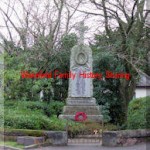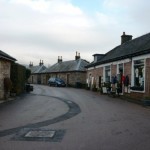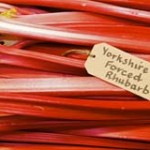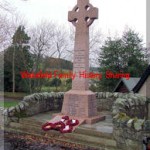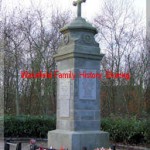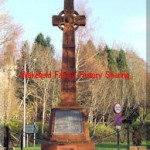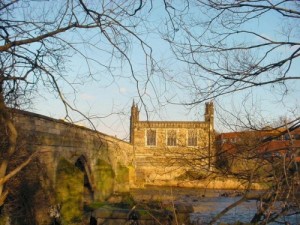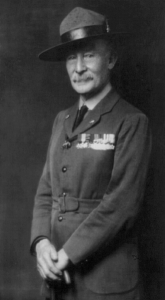Buchlyvie lies between the Highlands of Scotland and its more gentler Lowlands. In years gone by the villagers would been wary of the ‘fowk from the Highlands’ who were known to come down and steal cattle from the local pastures.
Stirling, Glasgow and Edinburgh are within easy reach, as are the Trossochs and Aberfoyle. Many inhabitants may commute to work but there are many who stay in the village and keep the services going i.e. The Buchlyvie Inn and the Rob Roy + the cafe, B & B, garage, shop, butchers and hairdresses to name but a few.
The War Memorial to remember Buchlyvie men is situated on the edge of the village and sits proud in a small garden at a ‘T’ junction for all passers by to see. The consists of a contrived rough cut stone set upon a few tiers with a wreath mounted above the names, surmounted by a cross.
So who is mentioned on the memorial ? Robert Alexander ; Andrew McLaren (MacLaren) ; Willliam McLellan born in Huntingdon, Yorkshire and enlisted in Stirling ; Ronald J McOnie of Buchlyvie, with brown eyes and hair and served with the Canadian Forces ; Archibald McVicar, son of Niven and Bessie and Alexander McIntyre who died of wounds and rests in one of France’s National Cemeteries. I’ve only mentioned a few here but follow the link to read more.
Oh! and if you have any more information about these young men, please let me know and I’ll add it the the page.
To read more about Buchlyvie young men who fought and laid down their lives click here
